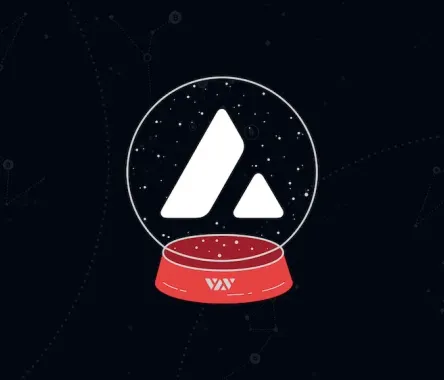What is Fuse?
Fuse is a decentralized EVM-compatible blockchain platform. Its main goal is to enable the massive adoption of cryptocurrency payments and decentralized finance (DeFi) by moving everyday payments and settlements to the blockchain. The Fuse team is trying to achieve this goal by providing developers with easy-to-use tools for creating and managing tokenized environments, as well as for providing simple interaction to the users connecting to the applications of these environments.
The project was launched in 2019 by a team previously involved in the creation of the Colu project, aimed at introducing local currencies to blockchain.
How does Fuse work?
The Fuse platform consists of three main components: the Fuse Network, an EVM-enabled public blockchain, which is a cornerstone of the Fuse platform; a mobile-focused open-source technology stack for adopting token payments, which includes Fuse Studio and the Fuse Wallet technology; a collection of DeFi products, developed by Fuse for the initial promotion of the platform.
The Fuse Network is a decentralized EVM-compliant public blockchain on which the Fuse platform and its ecosystem operate. The Fuse Network currently uses Parity's AuRa (Authority Round) consensus model for adding new blocks, the consensus mechanism also used in the xDAI blockchain. And there is the delegated share proof (dPoS) variant to protect against Sybil attacks and encourage validators.
Consensus is provided by a significant number (currently 100) of independent validators, only one of which is managed by the core Fuse team. Validators also participate in decisions about the network protocol changes through Fuse Improvement Proposals (FIP). To become a validator and participate in network consensus, a node operator must contribute the minimum required number of 100,000 FUSE tokens. Validators who violate the consensus rules can expect their share (including delegate contributions) to be frozen. This provides a strong incentive for validators not to break the network rules.
In the future, there are also plans to implement a Flutter Layer 2 payments (FL2P) scaling solution. This scaling approach relies on a technology called zero-knowledge (ZK) rollup. In this way, most transactions will be moved to the second layer of the blockchain.
Currently, the FUSE blockchain has native two-way bridges with Ethereum (mainnet) and BNB Chain. Both bridges are available through the Fuse-native DEX FuseSwap interface. The bridges currently support FUSE and ERC-20 tokens. The Fuse bridges are custodial, meaning that the bridge operator controls the funds transferred over the bridge and can return transfers if necessary.
How to use Fuse?
What makes Fuse Network special is that this platform is creating an open-source mobile-oriented infrastructure for cryptocurrency payments and DeFi. For now, this infrastructure consists of two main elements: the first one being the Fuse Studio platform and API for creating and managing token-based communities on Fuse, and second is the Fuse Wallet technology for creating mobile wallets compatible with Fuse Studio and the related communities.
The backbone of Fuse is Fuse Studio. It is a platform that allows businesses, organizations and projects to easily create and manage token-based communities. Currently, Fuse Studio consists of three key components: the Studio frontend, an application for creating and managing simple token communities without the need of coding skills; the Studio backend, which consists of the factories for the token communities’ smart contracts creation, a subgraph for the Studio, the Studio Server and IPFS nodes for storing community data off-chain; and the Studio API.
To use the Fuse Network, wallets supporting ERC-20 tokens, such as Metamask, must be used. However, the most compatible wallet is the Fuse Wallet. It is a cross-platform open-source mobile cryptocurrency wallet (for iOS and Android) written in Dart and built on Flutter. It runs on top of the Fuse network, but can be connected to any EVM-compatible blockchain.
That said, an important feature of Fuse is that all Fuse wallets are created as proxy wallets. Thus, each wallet represents a smart contract on Fuse, and the wallet owner is also the owner of the wallet smart contract. Only the wallet owner can initiate the smart contract actions by signing the transactions. This approach provides new features that are impossible or difficult to implement in the context of more traditional cryptocurrency wallets. Such features include payment automation, recurring payments, and social wallet recovery in the event of the loss of access.
Also, an important feature of Fuse is fee abstraction. Fuse wallets allow for an optional fee abstraction. Thus, the user’s fees can be paid by any third party willing to cover the fees, which relieves the user from paying network transaction fees for some transactions on Fuse. For example, if a festival organizer creates a mobile wallet for festival attendees, they may decide that users will be exempt from transaction fees when making payments during the festival.
Fuse staking
FUSE token staking is done through delegation of the tokens to blockchain validators through the Fuse Staking platform. The token holders who stake their tokens are called delegators. A delegator can choose any validator (or validators) and stake any amount of FUSE in their favour. The delegator receives a share of the fee for the Fuse block in proportion to their stake minus the fees paid to the validator. The minimum fee is currently set at 15%. This value was chosen to reduce the risk of validator consolidation by offering a very low delegation fee. Delegates are currently allowed to withdraw from FUSE at any time, but a minimum participation period is planned.
The FUSE token
FUSE is a native Fuse Network token. Currently, the FUSE token supply is set to follow a mildly inflationary model. The reward amount per block is currently set so that every year the FUSE total supply increases by approximately 5%.
The initial supply was 300 million tokens and was distributed as follows: 8.3% - ETOP (Employee Token Ownership Plan) Pool; 13.3% - early team, advisors and validators; 13.3% - private allocation + public liquidity release Mesa DEX; 21.7% - dev locked fund; 43.3 - bootstrap pool.
The FUSE token can be used for the following purposes: payment for transactions on the Fuse network, token staking to become a blockchain validator, voting for protocol changes (only validators can vote), delegating tokens to validators, and for passive earnings.
Is Fuse safe?
Fuse was founded by Mark Smargon, who previously also founded Colu, Bitgo, and Creatix. Full team can be found here.
Fuse was audited by Zokyo in November 2020
Ecosystem & Partners
Since its launch in 2019, Fuse has built a significant ecosystem around it that includes projects such as The Graph, Chainlink, and DIA in addition to the core Fuse infrastructure.
Fuse also has partnerships with multi-chain bridges and interchain protocols such as Multichain (formerly Anyswap), Connext; B2B applications built on the Fuse B2B infrastructure, which include Peepl, GoodDollar, Kolektivo, Comunitaria and Flambu, among others; DeFi tools, which include Voltage Finance (formerly FuseFi) and other major DeFi platforms include Sushi, Beefy Finance and Elk Finance; other tools, aggregators, trackers and bounties among them most notable are DappRadar, Dapp. com, Staking Rewards, DeBank, ImmuneFi.
What's next?
An up-to-date roadmap of the project is currently under development.
Links
https://docs.fuse.io/

 Arbitrum
+14
Celo
Avalanche
Harmony
Polygon
Optimism
Fuse
HECO
Metis Andromeda
Moonbeam
Moonriver
Aurora
Polkadot
Cronos
Kusama
Arbitrum
+14
Celo
Avalanche
Harmony
Polygon
Optimism
Fuse
HECO
Metis Andromeda
Moonbeam
Moonriver
Aurora
Polkadot
Cronos
Kusama





